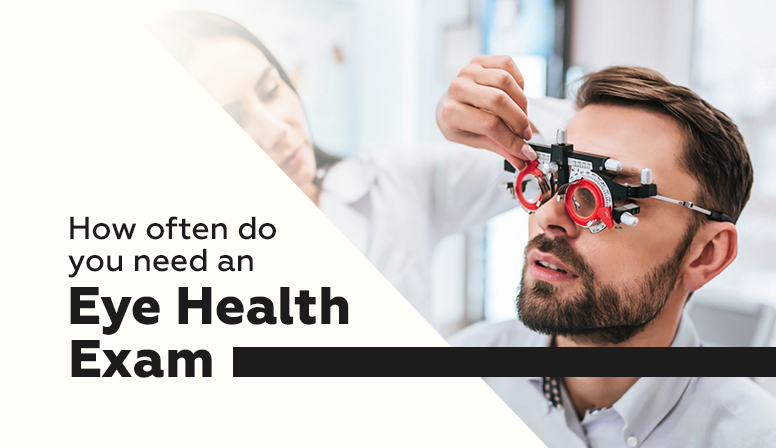You may feel the urge to do an eye health exam on a regular basis. How often you need an eye exam depends on your awareness and education. Medical boards in different countries spread continuous alertness programs about the necessity of optical routine exams. Besides catching the potential of several eye diseases and vision issues, such checkups also identify potential conditions throughout your body. Often these issues do not have any outward symptoms and signs until they cause loss of eyesight or diseases like cataracts or glaucoma.
How Often Does an adult need an eye health exam?
According to the world medical standard, every adult should have an eye exam once in two years. However, the frequency comes down to once a year for people aged over 65 years. This is mandatory as people at this stage come to the high-risk zone.
People who are more prone to ocular diseases may be one of the following:
- People with a personal or family history of visual issues.
- Persons living with a chronic health condition; these conditions often influence the eyes.
- Working on the computer would require you to have an eye health exam more frequently than others.
- Contact lens wearers are more prone to serious optical issues.
- People with confirmed progressive refractive error should keep regular attachment with their doctors.
- Laser eye surgery can make you prone to several health consequences. Try to avoid such operations; keep having eye health exams on a regular basis.
- Previous eye injury or surgery makes one prone to chronic health issues. Getting a regular eye examination will help you stay fit.
Types of eye exams and their frequency
Regular Eye Exams
Adults between 20 and 39 years should get their eyes tested every 2 to 3 years. The same is within 2 years for people between 39 and 64 years. The standard frequency of checking is one year for people above 65 years of age.
Children Eye Exam
International Eye Care Foundation asks everyone above 8 years of age to have eyes tested within a certain interval. Maintaining eye hygiene is more important for children.
Unless other issues prevail, take your child to an optometrist before he or she completes 2nd year. It would be their first visit to an eye doctor. You must complete the 2nd visit before the child goes to his 5th year birthday. From the 8th year post-birth, the frequency should be once in two years till the baby attains maturity.
Diabetic Eye Exam
Diabetes affects our blood sugar levels. The disease thus can influence the functioning of blood vessels in the eyes. If left untreated, it can damage your eyes.
Eye specialists have a special visual checking program for diabetic patients. They call the test a diabetic eye exam. The process involves diagnosing the eye condition and preparing a meticulous cure plan for diabetic-related eye conditions. These include:
- Diabetic retinopathy.
- Diabetic Macular edema.
Contact Lens Exams and Fittings
Contact lens users must pay frequent visits to their eye doctors. During such visits, the doctor checks whether the lens is a proper fit for their eyes. Besides providing comfort, such tests also help protect eye health.
The doctor assesses the patient’s eye health and measures the eyes. Thus, they can instruct the optometry technician about the best-fit contact lens for a patient.
Probable expectations from eye examinations
Doctors want you to have a comprehensive eye health exam within a fixed period of time. Optical researchers are thus coming up with new approaches involving high-tech policies to make the testing procedure simpler. Therefore, we have digitals on one side and optometry staples on the other. The latter involves practices that the ophthalmologists are applying for years.
You can expect the following out of an eye examination :
- The doctor will ask about your medical history. Knowing more about clinical visits details will help him make a clearer picture of your eye health.
- There will be a visual field test. The examination will help the specialist optometrist know about the scope and sensitivity of your central and peripheral vision.
- Snellen Chart: These are classic eye charts carrying letters in large and small dimensions. It helps fine-tune the patient’s prescription.
- The doctor may also require to build up an image of the retina and eye interior. They call the procedure Ocular Coherence Tomography.
Concluding words
Being diligent will always pay you. Don’t be experimental with your ailments, particularly concerning vision. Our vision is a priceless natural gift; do not skip eye health exam on a regular basis. If the cost worries you, you can discuss payment options with the clinic. Various insurance companies in the USA and different other countries provide coverage against such costs.

